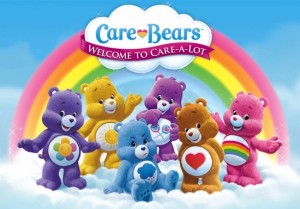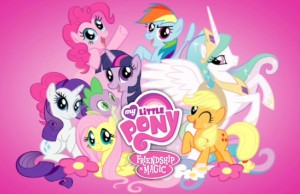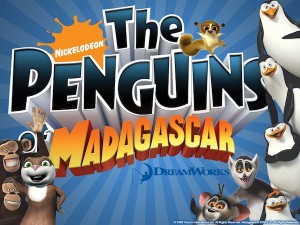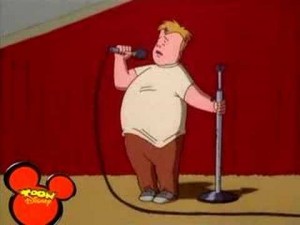Archive for category Animation
Email Interview with Amy Keating Rogers
Posted by kjohnson1585 in Animation, Television, Uncategorized, Writing on July 30, 2012
The cult-popularity of My Little Pony: Friendship is Magic may have its supporters and detractors, but the show itself is sweet and engaging in itself, and that can’t be denied, thanks to the talented writers and animators behind the show. One of the writers, Amy Rogers Keating, was willing to talk to be about MLP as well as Care Bears: Welcome to Care-A-Lot, where she is currently story editor. Be sure to follow her Twitter account here, as well as her Youtube page and the trailer to her documentary “Jason Bateman Think’s I’m Dead”.
Amy will also be at Midwestria, Septemeber 14-16, in Illinois.
TMB: Contrary to most interviews, I’d actually like to start off with Care Bears. You had a varied career in a lot of hand-drawn animation, so is it difficult to slow the “energy” down for a CGI cartoon?
AKR: Hmmm…I’m not sure what you mean by “slow the energy down.” Writing for any kind of animation is the same for me whether it’s hand-drawn, flash, or CGI. However, the writing does differ depending on the audience that it’s being written for. For instance, a preschool show is different than a show for a 6 to 9 year old audience because you have to explain more. With Care Bears and MLP, I know that the audience will grasp ideas without having to repeat or really spell them out.
TMB: I wanted to clarify that “slow down the energy” question. I meant in terms of wackier, more physical-based gags that may stretch character or cartoon physics. For example, in something like “Feeling Pinkie Keen,” Twilight is put through the ringer when trying to find the secret to Pinkie’s “Pinkie Sense.” I don’t imagine that it be as feasible to pile on so many physical gags like that in Care Bears, or most CGI cartoons. I guess my real question was if you had to limit those types of gags and behaviors, and if the change of pace was easier or harder.
AKR: Okay! Now I understand!
I guess I really didn’t think about having to limit myself as far as the cartoon physics because those issues never really came up in the stories. Not that we don’t have plenty of goofy gags and silliness, just not specifically what you’re talking about. Of course, the storyboard artists and animators know better what can be pushed in CGI and can put that humor in when the scripts get to those stages. I’m always amazed at what they pull off!
TMB: How did you decide which of the Care Bears to use as the core group?
AKR: I actually wasn’t part of that decision. When I was brought on as Story Editor, the core Care Bears had already been chosen. The great thing is that with so many Care Bears in the universe, we’re able to have lots of fun cameos!
TMB: Grumpy always was an interesting character to me, regardless of iteration. He seems to be, to put it as best I can, the writers’ way of expressing a certain self-loathing (in the most kid-friendly way possible) of working on a show about overly-friendly bears. Am I in the ball park, or am I way off here?
AKR: Grumpy is great! And once Doug Erholtz started doing his voice, it got even more fun because we saw how far we could push Grumpy and knew that Doug would enhance it even more!
But I fear you are “way off” regarding the whole self-loathing thing. I really love writing for shows that take place in worlds like Care-a-Lot and Equestria. These worlds are full of joy and silliness and songs. Not a bad place to hang out during your work day! As for the Care Bears being “overly-friendly,” I think that is looking at them too simply and too much on the surface. They are much more well-rounded than that. Yes, they are all Care Bears at the core (even Grumpy cares!), but they all have their flaws which make them very interesting and fun to write for. Share has jealousy issues, Harmony can be a bit bossy, and Funshine can be inconsiderate, forgetting that others need to have fun too. In Season One we really got to explore their personalities discovering what made each Care Bear tick.
TMB: Any chance we’ll be seeing the Care Bear Cousins?
AKR: The Care Bear Cousins won’t be appearing in Season One. But who knows about the future?
TMB: Okay, now I’ll ask about My Little Pony. It’s certainly a looser, wackier cartoon than most people expected. Did Lauren Faust and company come to the property with that vibe in mind, or did it develop organically over the course of production?
AKR: Lauren created the show with that vibe in mind. She wanted a fun, non-dumbed down show for girls. Her shorter draft of Ticketmaster had all of that silliness in there. Now, this was certainly built upon by the rest of the production team. But Lauren guided it all and knew what she was going for.
TMB: The explosion of cult popularity behind the show must have been unexpected. How have you been managing so far?
AKR: It is unexpected, though I had experienced a smaller version of this back on Powerpuff Girls. So, when I found out that adults–mainly men–were enjoying MLP: FiM, I wasn’t that shocked.
I’m managing the fandom well. I went to BronyCon and met a lot of fans and everyone was incredibly kind and appreciative. It was fantastic to experience their love for the show first hand. Bronies would break into song, which I found so amazing!
TMB: Although some fans can be overwrought, you have to be proud to produce something that even grown men will admit they enjoy. How do you think this idea proliferated? Do you think this may be the beginning of a change of view about how animation is perceived?
AKR: I am absolutely proud to be part of MLP:FiM. But then, I was proud of it before the show exploded with popularity. When it premiered, I was telling all the moms I know with daughters about this great new version of My Little Pony and was really excited that these girls had such a great show to watch with such strong female characters.
As for how the show proliferated to the adult male fan base, I think these viewers are animation fans to begin with. Since Lauren’s name was attached to the show and she has such a great track record, I’m sure they tuned in just to see what her latest show was. Then, when they saw the awesome designs, the great animation, the compelling characters, the fantastic music, and the strong writing, they got hooked!
I think animation has been gaining more respect for quite awhile. However, the fact that a children’s show is getting this kind of recognition is more unusual, but great!
TMB: Favorite character? How about favorite episode?
AKR: I really love Pinkie Pie. She is so silly and quirky and random. She’s very fun to write for because I can just go to my goofball side.
I enjoyed “A Friend in Deed” a lot because it was a full-on Pinkie episode. Plus there was one big song and lots of little ones and I love getting to write music.
TMB: Is maintaining continuity a main concern for the show? I understand the need for every episode to stand on its own, but how much emphasis is placed on making sure that events and ideas from earlier episodes continue in later episodes?
AKR: In Seasons One and Two, while the show isn’t serialized, we definitely were aware of keeping things consistent as the episodes were written, building upon the world and developing the characters as we went. I read everyone else’s scripts to make sure I knew about any changes and progress.
TMB: What’s next for the Spike and the Main 6?
AKR: Gosh, I have no idea! Because I was busy story editing on Care Bears, I did not write for Season 3. I’m looking forward to watching along with all the Bronies!
Email Interview With Robert Schooley
Posted by kjohnson1585 in Animation, Film, Television, Writing on July 19, 2012
The Penguins of Madagascar is a quietly excellent cartoon: a madcap, zany show that redefined the Madagascar’s cuddly-yet-militaristic team in an over-the-top Brooklyn zoo. Its insular nature made it hard to keep up, but, like Community, rewarded followers with inside jokes, excellent character gags, and nods to past events. Recently, the show finished up their production run, and sooner then later the final episodes will be aired on Nick. [07/19/12 – Edit: Just learned that, today, the show was also nominated for a Primetime Emmy!] Executive producer and writer Robert Schooley took some time out of his schedule to talk about the show, the difference between CGI and traditional animation, and whether the Lunicorns were indeed a My Little Pony parody. Be sure to follow him on Twitter.
TMB: The Penguins of Madagascar seemed to relish in being its own thing instead of hewing too closely to the Madagascar movies. How much of this was intentional from the start? Did Dreamworks or Nickelodeon have reservations in taking the characters in such a different and separate direction?
RS: It was a practical decision. DW didn’t know what the Madagascar sequel stories would be at that point, so the decision was made to feature all of the characters but the four leads and exist in a separate continuity from the features.
TMB: As a followup, what were the challenges, if any, in defining the characters and the show outside of the films?
RS: Skipper was fully defined already, so it was a matter of finding new aspects to the other three to round out the team. Because we were not really related to the movies, we felt pretty comfortable letting everyone develop naturally as we’d invent new comic quirks to have fun with.
TMB: Does the New York setting pose any issues? Since everyone who works on the show is in LA.
RS: Not really. Most of us are from the east coast anyway. I’m sure if we were living there while writing the show more particular real world details might have shown up.
TMB: The director of the first Madagascar film, Tom McGrath, mentioned here that he wanted to avoid “zoo vs. wild” type contentions. Seems like you doubled down on that philosophy. Can you elaborate on it?
RS: It’s such a unique world with it’s own strange logic, I’m not sure the issue really came up much.
TMB: How did ideas for characters and plots come up? It’s impressive how rich and diverse the cast has become in just a few years.
RS: Hardest question to answer. Most ideas just come out of looking to put a character through something. A few stories came out of specifics to the zoo setting, like “Snooze at the Zoo” or webcam, but most were just coming up with funny ways to put characters in conflict with each other, nature or the world.
TMB: While I wouldn’t say the show had a “story arc,” it seems to have a very loose style that allows events, stories, and characters to be called back to, referenced, and revisited. Was there a fear about that being alienating to new audiences?
RS: Always a risk and probably something the network would rather we didn’t do, but all the shows we produce have a rough internal continuity. We like to reward fans who watch every episode. And in this DVR age it’s not hard to do.
TMB: I would like to talk about the animation for a moment. We’ve come a long way since Reboot. How challenging is it to make strong, cartoony movements (squash and stretch, smears and blurs, etc.) via CGI?
RS: We have really great animators in our studios working off very strong board poses. It amuses me when people confuse rendering (i.e. detailed fur) to character animation. On a TV budget and schedule we can’t do the same lush rendering as a feature, but I think we do get every ounce of subtlety and personality out of these characters. We are constantly amazed by the little extra touches the teams in India and New Zealand add to the acting.
TMB: Which do you prefer, traditional or computers?
RS: Apples and oranges. I like both. Kim Possible was a great looking show and I’d do that style again in a minute. A big advantage to traditional is that you can create a much bigger world, since every set and guest character doesn’t have to be laboriously built. And it can be a more stylish look, ideally. But there’s also a great feel of spacial reality in CG that lends itself to the more sitcom sorts of stories that we do on this show, and yet, thanks to the process that’s been refined here at Nick, with genuine cartoon snap and timing that is genuinely fun to watch.
TMB: How did you get into the TV animation business? How’d you get tagged as executive producer of this show in particular?
RS: Started in the mailroom at DIC, a busy studio in the 80’s. Started pitching stories to their shows, got hired on staff. Eventually drafted to Disney, worked our way up to exec producer there. We were recruited to run Penguins after they had already done a first version of a pilot that we came in to rework.
TMB: Favorite character? Favorite episode?
RS: Can’t really pick a favorite character. Honestly they’re all fun to write. I think Skipper is pretty special because Tom created him and can add little touches and ad libs in the performance that surprise and delight us. But I think everybody has added unique touches to their characters. Danny’s King Julien is a constant exploration of how far you can push an ego. I love when Jeff gets to play Kowalski as unexpectedly emotionally fragile. Or when John decided Rico should sing like Michael McDonald. And nothing made me laugh more than James when Private got angry at everybody.
Favorite episode may be “The Penguin Who Loved Me” because it’s the final Blowhole episode and it pays off a lot of running gags from the series. It may end up being the last to air.
TMB: Now that production is finished on the show, what’s next for you and the Penguins? Rumor has it that there may be a movie in the works.
RS: There is a Penguins movie in production at DW, but at this time it’s unrelated to the series. That could always change though, I guess. We, and most of the staff and some of the cast are deep into the next series Monsters vs. Aliens.
TMB: Final question: Are the Lunacorns really the show’s jab at the My Little Pony fandom?
RS: One man’s jab is another’s homage.
The Rare Sighting of the Sensitive Male Lead
Posted by kjohnson1585 in Animation, Television, Uncategorized, Writing on July 16, 2012
If you’re the main character of a TV show, of any genre, you better have some balls. Why sensitive male leads are difficult to come by.
When preparing for my “Prepubescent Girls that Can Kick Your Ass” inventory, a friend of mine mentioned thinking about, essentially, the opposite version: the sensitive male. She was curious about where the low-key, poetry-loving, caring, affectionate, “not-afraid-to-talk-about-his-feelings” men were in our entertainment. I began thinking about this too, and, well, it’s a pretty good question.
I’m currently watching Recess, the Paul Germain/Joe Ansolabehere animated show that appeared on One Saturday Morning, an ABC/Disney block of cartoons that included The Brand-Spanking New Doug, Pepper Ann, and The Weekenders. Recess was pretty much the winner, nailing a full six seasons and two movies. And of the six main characters, Mikey represented exactly what my friend and I were looking for – the sensitive male as a main character (or at least one of many).
It shouldn’t really surprise me, then, to see most Youtube comment expressing their hate of Mikey. It’s disappointing to see that much vitriol – Mikey does nothing narratively wrong or unlikeable – but it is somewhat difficult to muster a lot of support for his emotional outbursts and poetic diatribes on competition, justice, and Santa Claus. Part of the issue is that it’s hard to understand why exactly Mikey is the way he is. We don’t get too much on his childhood or parents, unlike the rest of the cast, and seeing him struggle with standing up for himself, even for simple things, is a bit hard to swallow, even for kids. And then it hit me: sensitive male leads are, narratively, dead-weight.
Well, not all of them. (I point one out later in the piece that may be an exception.) But for the most part, sensitive males, being more introverted, quiet, and non-confrontational, push against the narrative necessity for conflict to brew. If the character can’t, or is unwilling, to engage in conflict, then it’s hard to create a plot using that archetype. Conflicts that do involve them often involve “growing a backbone,” becoming more confident and standing up to bullies. But few pieces of entertainment touch upon the nature of sensitivity as a positive development towards a goal, unless it’s involves romancing the opposite sex.
(Keep in mind, a lot of what I mentioned can be applied to sensitive female characters too; it’s unfortunate but true that social constructs allow sensitive female characters to be more prevalent, yet we see more or them as progenitors of their own development – see Fluttershy from My Little Pony or Kaylee from Firefly. It also helps that Josh Whedon and Lauren Faust are very talented. In other words, we’re used to, and comfortable with, sensitive female characters. Not so much with males.)
There is a unique exception to this: Private, from The Penguins of Madagascar TV show on Nickelodeon, a surprisingly excellent show in its own right. Private, the “newest” recruit in the penguins underground, paramilitary organization, is indeed a sensitive soul, enjoying The Lunicorns, being a neat-freak, and not afraid to showcase his feelings, to the chagrin of his team. But quite often, Private is shown to be smart, pragmatic, and a hell of a soldier, both in cunning, speed, and ability to fight. It’s a rare sight – not even the highest-rated TV shows have male characters that can exhibit both sensitivity and bravado. And, consequently, he’s become one of my favorite characters on TV right now.
But even in the case of Penguins or Recess, the sensitive male is not the SOLE lead, but part of a group dynamic. I’d be hard pressed to find any show that really had or has a soft-ball character leading a narrative charge. There’s Lazlo from Camp Lazlo, I suppose, although his sense of adventure may overshadow his sensitive nature. The brief encounter I had with the show Scaredy Squirrel had a character similar to Private, sans fighting ability, so maybe he is the true exception – yet no one watched the show, which doubles down on my “lack of popularity” theory.
Are there any male lead characters out there that are relatively well-know? I’m thinking no, but I’m definitely willing to hear people out in the comments below.





